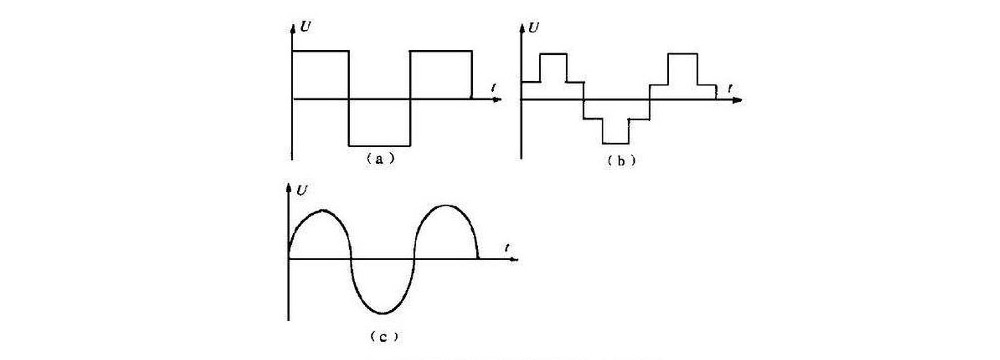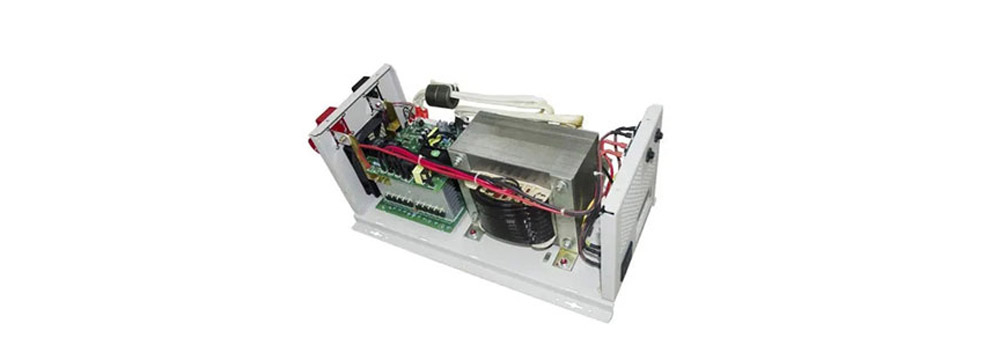A pure sine wave inverter is a common type of inverter, consisting of an inverter bridge, control logic, and filtering circuits. Pure sine wave inverters are widely used in industrial electronics and semiconductor device technology. Today, we will discuss in detail what a pure sine wave inverter is and what its characteristics and functions are.
I. What is a pure sine wave inverter?
Inverters can be categorized by their output waveform: square wave inverters, modified wave inverters, and sinusoidal inverters. Therefore, a sinusoidal inverter is defined as one with a sinusoidal output waveform.
A pure sine wave inverter is a type of inverter, an energy conversion device that converts direct current (DC) into alternating current (AC). This conversion is accomplished by switching power semiconductors on and off according to a specific pattern. The name "inverter" comes from the fact that an A/D converter or power adapter rectifies 220V AC into DC for use, while an inverter performs the opposite function.

II. Working Principle of a Pure Sine Wave Inverter
Common pure sine wave inverters convert current by dividing the DC voltage into two modes. One mode primarily provides control signals to the front-stage IC, generating currents exceeding kilohertz, while the other mode is distributed to the front-stage power transistors. The control signals drive the power transistors to continuously switch, generating low-voltage, high-frequency AC power at the primary side of the high-frequency transformer.
This AC power is characterized by low voltage but high frequency. This is primarily intended to enable the transformer's downstream stage to generate a higher voltage. This AC power is then converted to high-frequency AC power by the high-frequency transformer. After being rectified by a full-bridge fast-recovery diode, it outputs a high-frequency DC power of several hundred volts to the downstream power transistors. The downstream IC then generates a control signal of approximately 50 Hz to control the operation of the downstream power transistors, ultimately outputting 220V, 50 Hz AC power, thereby better protecting the circuit.
III. Advantages of Pure Sine Wave Inverters
Their advantages are a good output waveform with very low distortion, and their output waveform is essentially identical to the AC waveform of the mains power grid. In fact, a high-quality sine wave inverter provides AC power of even higher quality than the mains power grid. Sine wave inverters also have minimal interference with radios, communications equipment, and precision equipment, low noise levels, and strong load adaptability, meeting all AC load requirements. They also offer high overall efficiency. However, their disadvantages are the complexity of their circuitry and circuitry compared to modified sine wave inverters, requiring high control chip and maintenance expertise, and a relatively high price.
IV. Characteristics of Pure Sine Wave Inverters
A pure sine wave inverter produces a good waveform with relatively low distortion. Furthermore, the output waveform is essentially identical to the AC waveform generated by the mains power grid. However, the AC power output from a pure sine wave inverter is significantly better quality than that provided by the mains power grid.
Pure sine wave inverters have minimal interference with radios, communications equipment, and precision equipment, low noise levels, and strong load adaptability, meeting all AC load requirements. They also offer high overall efficiency. There's no electromagnetic pollution from the power grid. Simply put, it offers a wide range of applications, strong load capacity, and excellent stability, providing AC power comparable to that used in ordinary household applications. Given the required power, it can power nearly any appliance.

V. Functions of a Pure Sine Wave Inverter
1. Inverter Output: After turning on the "IVT SWITCH" on the front panel, the inverter converts the battery's DC power into pure sine wave AC power, which is output via the "AC OUTPUT" on the rear panel.
2. Automatic Voltage Regulator: When the battery voltage fluctuates between the undervoltage and overvoltage points, and the load remains within the rated power, the device automatically stabilizes the output voltage. Overvoltage Protection: When the battery voltage exceeds the "overvoltage point," the device automatically shuts off the inverter output, displays "Overvoltage" on the front panel LCD, and sounds a ten-second buzzer alarm. Inverter operation resumes when the voltage drops to the "overvoltage recovery point."
3. Undervoltage Protection: When the battery voltage falls below the "undervoltage point," the device automatically shuts off the inverter output to prevent overdischarge and battery damage. "Undervoltage" appears on the front panel LCD, and a ten-second buzzer sounds. When the voltage rises to the "undervoltage recovery point," the inverter resumes operation. If a switching device is selected, the device automatically switches to AC power output during an undervoltage condition.
4. Overload Protection: If the AC output power exceeds the rated power, the device automatically shuts off the inverter output. "Overload" appears on the front panel LCD, and a ten-second buzzer sounds. Turning off the "IVT Switch" on the front panel will clear the overload indication. To restart the device, verify that the load is within the permitted range before turning on the "IVT Switch" to restore inverter output.
5. Short-Circuit Protection: If a short circuit occurs in the AC output circuit, the device will automatically shut down the inverter output. The front panel LCD will display "Overload," and a buzzer will sound for ten seconds. Turning off the front panel's "IVT Switch" will clear the overload indication. To restart the device, verify that the output circuit is normal before turning on the "IVT Switch" to restore inverter output.
6. Overheat Protection: If the temperature of the control unit inside the chassis is too high, the device will automatically shut down the inverter output. The front panel LCD will display "Overheat," and a buzzer will sound for ten seconds. Inverter output will resume after the temperature returns to normal.
7. Reverse Battery Protection: The device features comprehensive reverse battery protection. If the battery polarity is reversed, the internal fuse will automatically blow to prevent damage to the battery and the device. However, reverse battery connection is strictly prohibited.
8. Optional Mains Switchover: If this function is selected, the device automatically switches the load to the mains in the event of battery undervoltage or inverter failure, ensuring system power supply stability. Once the inverter is operating normally, it automatically switches back to the inverter.
VI. Applications of Sine Wave Inverters
1. New Energy Utilization: New energy, broadly speaking, refers to solar energy, including wind energy, water potential energy, and chemical energy. New energy sources such as solar and wind energy will become major energy sources. These new energy sources are typically collected using photovoltaic cells made of semiconductor materials and converted into various types of electricity for human consumption using scientific and technological means. Inverter technology is one of the key technologies.
2. Eliminating Mains Harmonic Pollution: Effective management of harmonic pollution not only improves the operating quality of electrical equipment and saves energy, but also contributes to public electricity safety. By rectifying the mains power and converting it to mains standards using modern inverter technology, harmonic pollution can be reduced, protecting the safety of electrical equipment and users.
3. The inverter is a critical component of a small wind turbine system, converting DC power into AC power to power the load.
4. Other Applications: Inverters are also widely used in a variety of other applications, such as AC motor speed regulation, motor braking regenerative energy recovery, uninterruptible power systems, induction heating, arc welding power supplies, and variable-frequency power supplies.
Share our interesting knowledge and stories on social media














